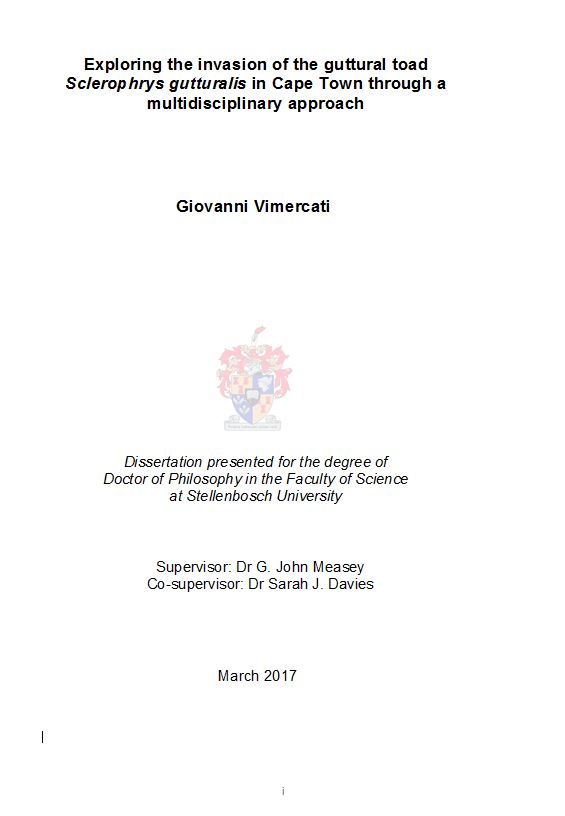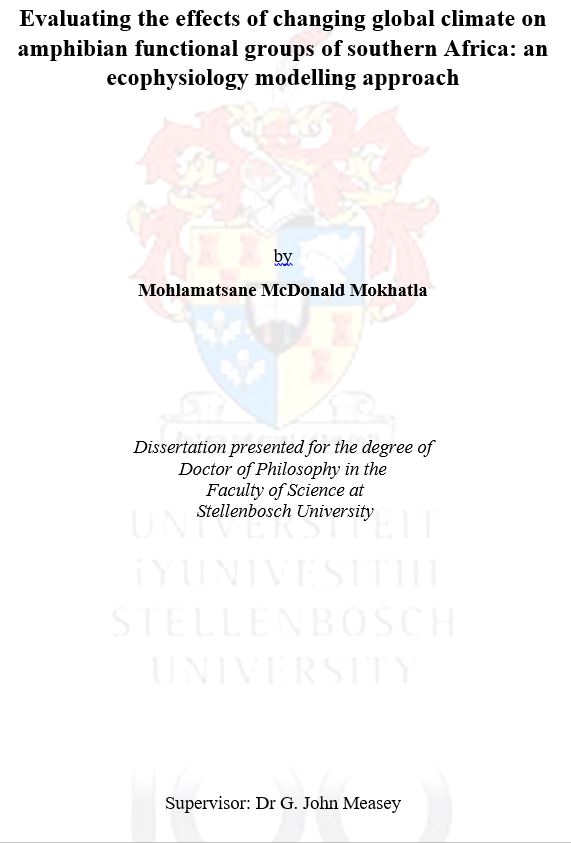Formatting your thesis
Let’s face it, after spending so much time writing your thesis, having it formatted so that it looks very smart for submission is gratifying. Try to make it a fun event by listening to your favourite music very loudly or having some of your banned tipple (do both if you dare!). It doesn’t require the same level of creative concentration required when writing your thesis, but it does need great attention to detail.
Your university will have their own stipulation for exactly how they want the thesis formatted. In this very short blog post, I’ll point you to the relevant links for Stellenbosch University and provide a check-list for last things to do before you submit.
Here are the Stellenbosch University library guidelines on thesis submission. Ultimately, your thesis will be deposited to the library, so their guidance is golden:
https://library.sun.ac.za/en-za/Help/Pages/online-thesis-submission.aspx
This link has really useful guidance for formatting in your word processor:
This is the link for the SU writing lab;
https://apex.sun.ac.za/
 |
 |
 |
Your faculty will have their own requirements. Make sure that you consult the student handbook for your department of faculty:
Many of these final formatting requirements are also useful for journal submissions. Note that these all require time. If you don’t have the time, then please make your advisor aware what has and what has not been done so that you can prioritise what must be done before submission.
The following points are based on what may irritate or annoy your examiner (and you really don’t want to do that!):
- Spell check - yes, it sounds obvious but doing a final spell check is a good idea. Not only this, but take the time to have your word processor ignore or add all of the special words (e.g. species or site names) that it doesn’t otherwise recognise. This will ensure their consistency throughout (within and between chapters).
-
- Make sure that your language settings are set to ‘South Africa’.
- Look out especially for words that have different accepted spellings like those ending in -ise or -ize. Decide which you want and be consistent
- Capitalisation of common names, place names and not adjectives. For example, ‘South Africa’ has two capitals, but ‘southern Africa’ only has one.
- Grammar check - always good to take a final look, especially for chapters that you wrote some time back.
-
- Use the word processor automated options to help you.
- Have your computer or another device read the text so that you can hear anything obviously wrong.
- Pay attention if you have used “we” or “I” and make sure they are consistent in your thesis. As a rule I encourage “I” in a thesis, unless the chapter is also a manuscript, in which case “we” is usually correct.
- Page layout. Really important to get this right in your template. Make sure that your template has:
-
- Correct paper size (A4 and not US letter)
- Margins
- Line spacing
- Page numbers
- Line numbers (really helps your examiners)
- Headers & Footers. If you can manage a chapter specific header, it’s useful to show your name and a short chapter title.
- Sections and subheadings. I’ve encouraged you to use subheadings throughout your thesis. Here you have a chance to number them sequentially. This is very useful for your examiners and may be a requirement for the university. Using the word processor’s built in functions will make this task consistent and easy.
-
- I dislike writing within a formatted document (as word processors can start getting weird), so my preference is to cut and paste written text into a template at the end.
- Remember to give them a check through before handing it in. If you’ve done the sections correctly, then the contents page will come out right.
- Title page - prescribed very strictly by the university. The librarians place the SU watermark after final submission to the library.
- Content page - word processors can do this automatically if your thesis is formatted correctly throughout (see sections & subheadings above).
-
- You can check this to make sure that you’ve done all of your sections and subheadings correctly.
- Acknowledgements - this is your time to say thank you to all the special people that have helped during your study. There are probably more than you realise, but in addition to your friends and family (who most people don’t forget), think about the people who administered the work, lab mates (past and present) who were always there to help, and people who gave permission at study sites.
- References - probably one of the most dreaded sections of any thesis preparation, but they do have to be done. If you’re one of these people that has everything in a database, then you’ll be laughing or cursing your database throughout. While it might be tempting to only look through the data within the database, spend some time to see how it’s displayed in the thesis. A mistake in the reference database will be multiplied many times in the thesis. Remember that examiners love to take a random look through the reference section to make sure that it’s all good. After years of painfully entering references themselves, they know just what to look for.
Mistakes people make:
Other than the obvious things all mentioned above, here are some of the mistakes I’ve seen.
- Submitting the wrong version (yes this does happen!). Probably worse if having a mixture of right and wrong versions for different chapters (worse because it takes longer to sort out)
- Last minute additions to text with incorrect spelling and or grammar
- Two correctly spelled synonyms sitting next to each other when only one is desired (probably came about when editing)
- Leaving the ‘mystery sentence’ added by your advisor to make sure that you read your thesis one last time. When I’ve given the final nod to my students that their thesis is ready for submission, I always ask them to read it just one more time. I’m well aware that given how many times they’ve read it, they are unlikely to do it again. So, to give some incentive, I add an unflattering remark to the thesis in a random position aimed at the examiners. I reason that students are unlikely to want to insult their examiners, and so this extra push will be enough to have them read it one more time.
- Comments and or edited text (especially when it’s marked as being by someone other than the student).
- Page numbers that start again and again at different sections
- Lots of blank pages or spaces (avoid blank pages if you can, and try to limit the amount of blank space (never >half a page).
- Leaving important people out of the acknowledgements (e.g. advisor, administrators, funders, etc.)
